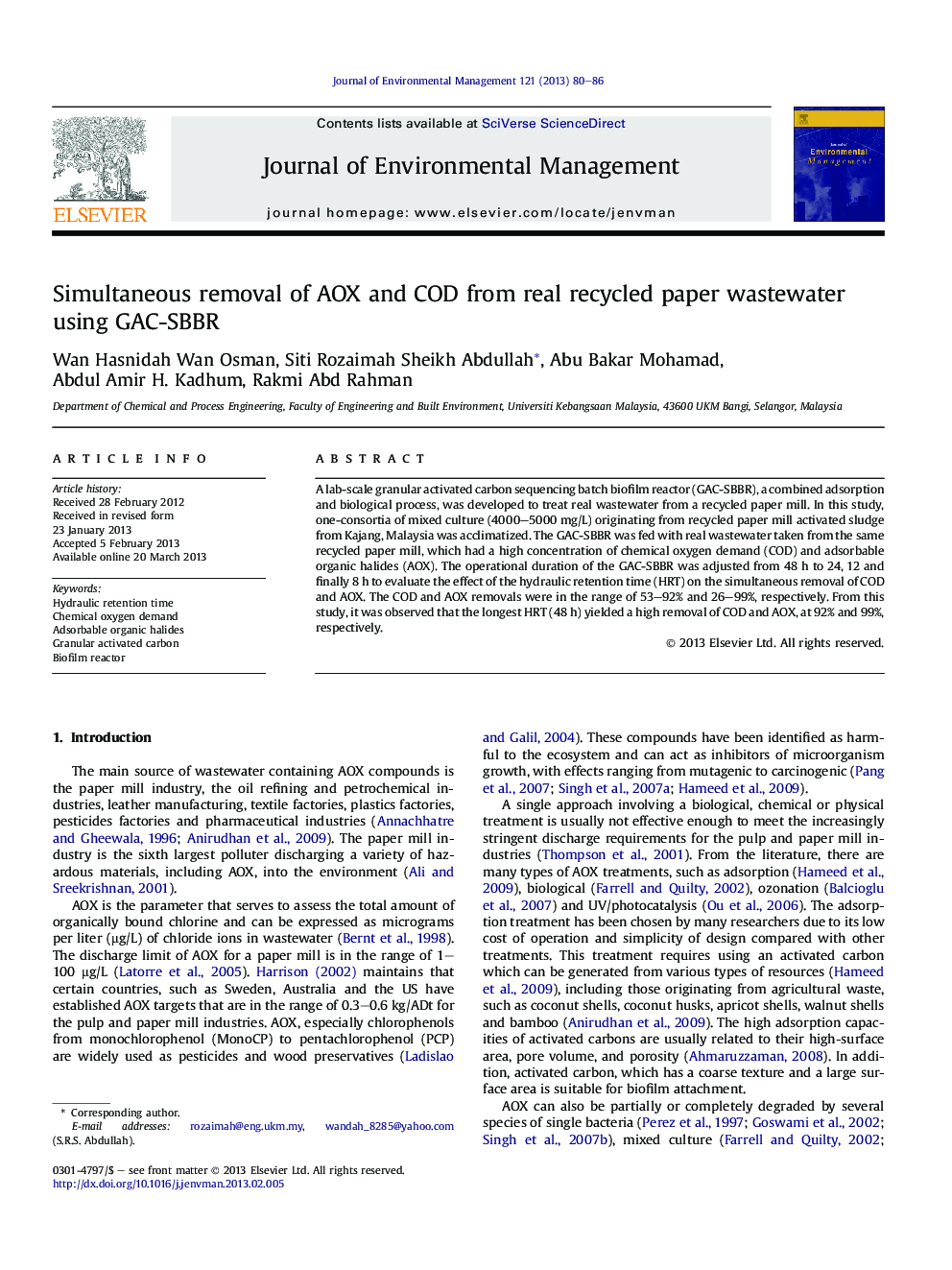| Article ID | Journal | Published Year | Pages | File Type |
|---|---|---|---|---|
| 1056357 | Journal of Environmental Management | 2013 | 7 Pages |
A lab-scale granular activated carbon sequencing batch biofilm reactor (GAC-SBBR), a combined adsorption and biological process, was developed to treat real wastewater from a recycled paper mill. In this study, one-consortia of mixed culture (4000–5000 mg/L) originating from recycled paper mill activated sludge from Kajang, Malaysia was acclimatized. The GAC-SBBR was fed with real wastewater taken from the same recycled paper mill, which had a high concentration of chemical oxygen demand (COD) and adsorbable organic halides (AOX). The operational duration of the GAC-SBBR was adjusted from 48 h to 24, 12 and finally 8 h to evaluate the effect of the hydraulic retention time (HRT) on the simultaneous removal of COD and AOX. The COD and AOX removals were in the range of 53–92% and 26–99%, respectively. From this study, it was observed that the longest HRT (48 h) yielded a high removal of COD and AOX, at 92% and 99%, respectively.
► We conducted an integrated process that combines adsorption and biological processes. ► We used real wastewater from a recycled paper mill in Kajang, Malaysia that contained high concentrations of COD and AOX. ► Increasing the hydraulic retention time of the reactor results in good removal efficiencies for COD and AOX.
